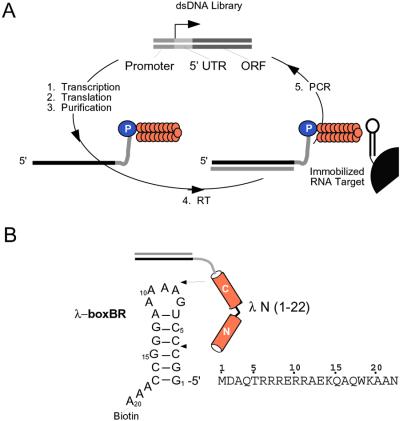Figure 1.
(A) Selection cycle. (B) Constructs used. In the selection cycle, a double-stranded DNA library containing randomized codons is transcribed, generating a pool of mRNA templates. These templates are then ligated to a flexible DNA oligonucleotide containing puromycin at its 3′ end. Translation of these ligated templates in vitro produces peptides covalently attached by means of their C terminus to the 3′ end of their own message by way of a stable amide linkage—a mRNA–peptide fusion. These fusions are then converted into cDNA/mRNA hybrid fusions by using reverse transcriptase and subjected to selection on an affinity matrix.

